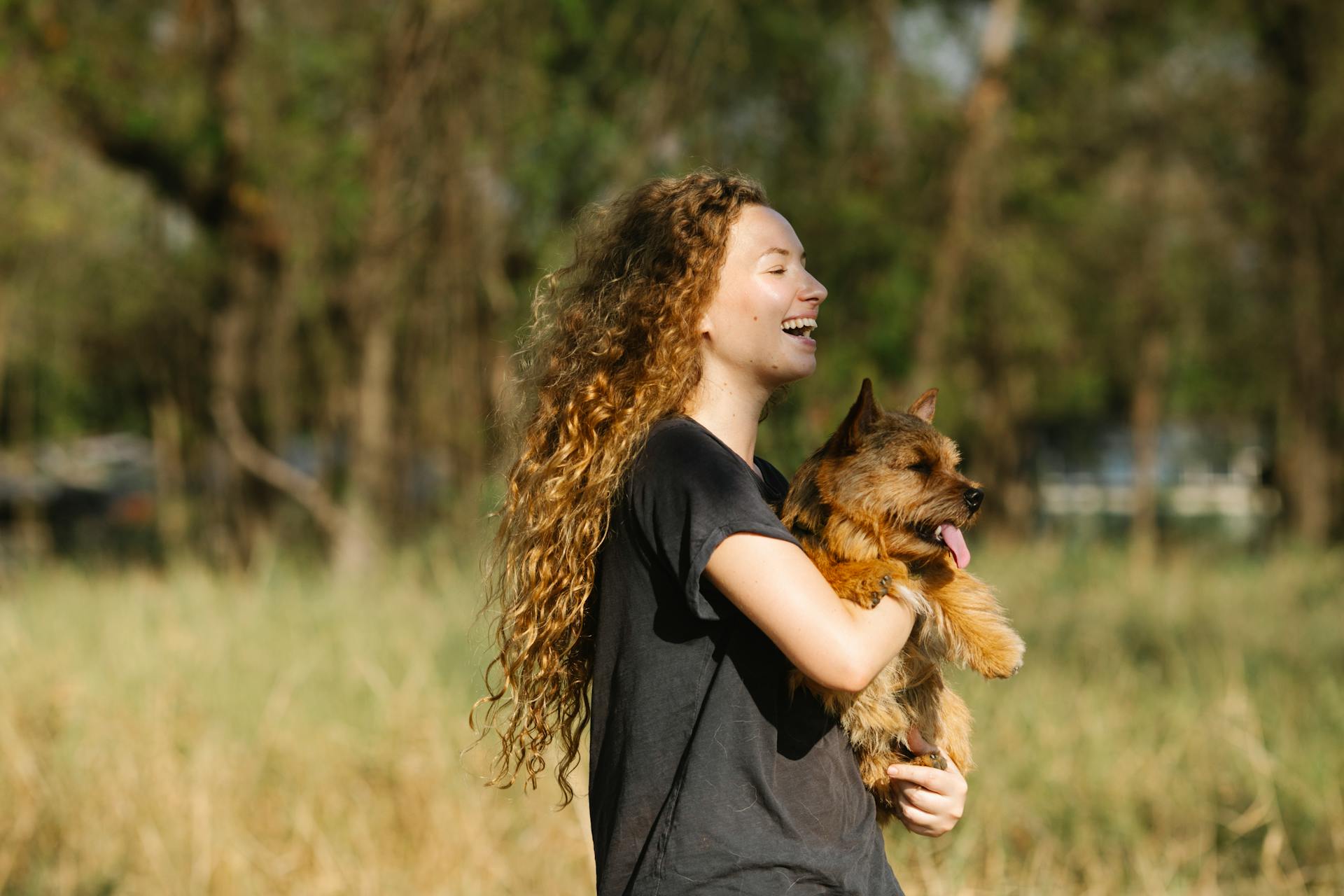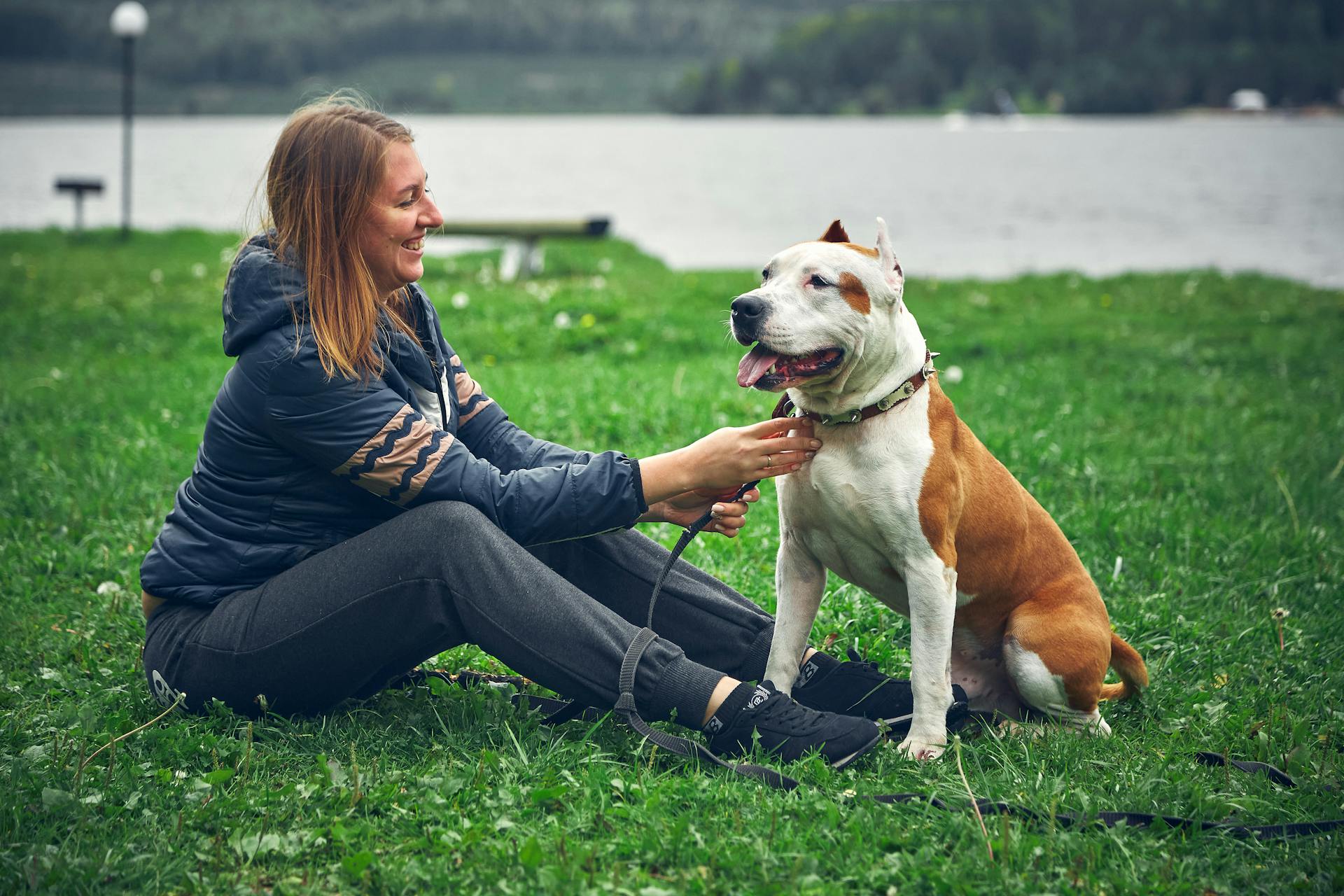
Schipperkes are a unique breed with a rich history dating back to the 16th century in Belgium.
They were originally bred as ratters and guard dogs, and their name "Schipperke" literally means "little sailor" in Dutch.
Schipperkes are small dogs, typically weighing between 8-18 pounds and standing 10-14 inches tall.
Their distinctive beard and mustache make them look like a miniature version of a German Shepherd.
Schipperkes are known for their intelligence and energetic nature, requiring regular exercise and mental stimulation to prevent boredom and destructive behavior.
With proper training and socialization, Schipperkes can thrive in a variety of living situations, from apartments to homes with yards.
Caring for a Schipperke
Schipperkes are intelligent, curious dogs that have a lot of energy.
They require activities that keep their mind engaged and their body active, or they may bark to excess or engage in destructive chewing.
Weekly brushing is a must to keep their black, medium-length double coat free of tangles and remove dead hair.
Schipperkes don't need as much grooming upkeep as other fluffy dogs might, but they do shed heavily twice a year, in spring and fall.
During these heavy shedding periods, they need at least weekly brushing to remove dead hairs.
You can do all your grooming upkeep at home, Schipperkes don't require professional grooming.
What to Feed a Pet
Feeding your AKC Schipperke requires some thought and planning. A good place to start is with a complete and balanced diet, which can be achieved by feeding an Association of American Feed Control Officials (AAFCO) kibble or wet food.
Schipperke puppies need a diet formulated specifically for puppies. This will help ensure they get the nutrients they need to grow and develop properly.
Adult Schipperkes can benefit from a diet focused on dental health to prevent dental disease. Feeding a measured amount twice a day is a good rule of thumb.
To prevent low blood-sugar levels, puppies should be fed at least three meals a day. This can also help prevent overeating and obesity.
Suggestion: What Are Siberian Huskies Good for
The perfect amount to feed your Schipperke depends on their size, metabolism, health, and lifestyle. It's best to consult with your veterinarian to determine the ideal feeding quantity.
Measuring your dog's food and avoiding free-feeding can help prevent obesity. This is especially important for Schipperkes, as they can be prone to weight gain.
Adding omega-3 fatty acids to your Schipperke's diet may also be beneficial. These fatty acids can be found in skin and joint supplements, fish oil, and some specially formulated dog foods.
Health and Wellbeing
The Schipperke is generally a healthy breed, but like all breeds, they can be prone to certain health issues. They have a long lifespan of 12-16 years.
Their median lifespan is around 13 years, with some living up to 15 years or more. The oldest recorded Schipperke lived to be 17+1⁄2 years old, and there's even a case of a Schipperke living to 18 to 19 years old.
Suggestion: Schipperke Lifespan
Schipperkes need regular exercise and a balanced diet to stay healthy. Inactivity, overfeeding, and lack of exercise can lead to joint and skeletal problems, as well as tooth, heart, lung, or digestive conditions.
Some common health issues in Schipperkes include luxating patella and Legg-Perthes syndrome, which can cause knee and hip disorders. Epilepsy has also been known to occur in some Schipperkes, although there's no concrete evidence to prove it's genetic.
MPS IIIB is a genetic mutation that affects around 15% of the breed population. It's a lysosomal storage disease that can cause balance problems and difficulties navigating obstacles. Unfortunately, there's no cure or treatment for this condition.
Here are some common health issues to watch out for in your Schipperke:
- Luxating patella
- Legg-Perthes syndrome
- Hypothyroidism
- Obesity
Regular check-ups with your vet and a healthy lifestyle can go a long way in keeping your Schipperke happy and healthy.
Coat Care
Schipperkes shed twice a year, in spring and fall, and need regular brushing to remove dead hair.

You'll want to brush your Schipperke at least once a week, but during heavy shedding periods, daily brushing is a must.
Their black, medium-length double coat requires weekly brushing to prevent tangles and remove dead hair.
You can do all your grooming upkeep at home, as Schipperkes don't require professional grooming.
The good news is that their coat is relatively easy to care for, with weekly brushing and routine bathing being all you need.
For more insights, see: Shiba Inu Coat
Exercise
The Schipperke is a lively little dog that requires regular exercise to stay happy and healthy. At least one 15 to 20 minute walk per day is a great place to start.
They'll also appreciate some time at the dog park or in a fenced-in yard, where they can run around and get some exercise.
Temperament and Personality
Schipperkes are active and confident dogs, always interested in their surroundings. They're naturally curious and love to be involved in everything that's going on.
Their small stature belies their big personality, as they're incredibly loyal and affectionate with their human family members. In fact, they're often described as "Velcro dogs" because they love to stick close by.
Schipperkes are patient with children who are gentle with pets, making them a great choice for families with kids. However, they can be wary around strangers, which is why proper socialization is crucial.
As watchdogs and ratters, Schipperkes have been bred to be alert and aware of their surroundings. They tend to know where everyone is at all times, which can be both a blessing and a curse.
With the right training and socialization, Schipperkes can thrive in a wide range of environments. They're adaptable dogs that can make great pets for active families or working individuals.
Owning a Dog
Owning a dog can be a thrilling experience, but it's essential to know what you're getting yourself into. The Schipperke is an extremely adaptable dog, but they can also be a bit temperamental.
They require regular exercise to stay happy and healthy, which is crucial for their overall well-being. A daily walk or playtime is a must to keep them entertained and exercised.
Their adaptability also means they can thrive in various living situations, from apartments to houses with yards. However, their temperamental nature means they need consistent training and socialization from an early age.
With patience and understanding, they can become loving and loyal companions. Their intelligence and trainability make them a joy to work with, but it's essential to be prepared for their independent streak.
Their grooming needs are relatively low, but they do require regular nail trimming and ear cleaning to stay clean and healthy.
History and Genetics
The Schipperke breed has a rich history that dates back to the 1600s in Flanders, where they may have originated.
Their original function was not as boatmen or ship dogs, but rather as small game hunters and ratters. The breed name "Schipperke" translates to "little shepherd" in the Flemish language, which might be a more accurate description of their origins.
Additional reading: American Bulldog Puppies Johnson Breed
In the 17th century, a similar breed called the Leuvenaar was commonly found in the Louvain region of Belgium, and it's believed to be the foundational breed for both the Schipperke and the Black Belgian Shepherd Dog.
DNA laboratory studies have shown that the Schipperke is more closely related to the Pomeranian dog than the Belgian sheepdog, and is very closely tied to Spitz type breeds.
General Appearance
The physical characteristics of this subject are quite fascinating. They have a unique combination of traits that set them apart.
Their skin tone is often described as fair, with a tendency to burn easily in the sun. This is due to their genetic makeup, which affects the way they produce melanin.
Their eyes are often a bright blue or green, a result of a specific genetic variation that influences the production of pigments in the iris. In some cases, their eyes may also appear hazel or brown.
Their hair is typically light in color, ranging from blonde to auburn, and can be straight or wavy. This is influenced by their genetic code, which determines the production of melanin in their hair follicles.
Their height and body proportions are also influenced by their genetics, with some individuals being taller or shorter than average.
Curious to learn more? Check out: Ruby Short Hair Cavalier King Charles Spaniel
History
The Schipperke's history dates back to the 1600s in Flanders, where they may have originated.
In the 1880s, Schipperkes were first recognized as a formal breed, with their standard being written in 1889.
The breed name "Schipperke" translates to "little boatman" or "little captain" in Flemish, but it's worth noting that they weren't originally used on barges.
Schipperkes were also known as "Spits" or "Spitzke" due to their pointed ears, and occasionally called "Moorke", meaning "little black animal".
Their history predates the official name "Schipperke", which was inspired by the word "scheper", meaning shepherd, in the areas of Leuven and Brussels.

The Schipperke's origins can be linked to the 17th-century black shepherd dog, the Leuvenaar, which was a 40-pound dog used to guard flocks and transport.
In World War II, the Belgian Resistance used Schipperkes to run messages between resistance hideouts, exploiting their small size and agility.
The first Schipperke arrived in the United States in 1888, and the American Kennel Club officially recognized the breed in 1904.
The breed has a long history of serving as ratters, with records showing they were used for this purpose for hundreds of years.
Schipperkes first appeared in a dog show in Brussels in 1690, which is quite impressive considering their formal recognition was over a century later.
Genetic Genealogy/DNA Research
The Schipperke's genetic makeup is quite interesting. DNA laboratory studies have shown that the Schipperke is more closely related to the Pomeranian dog than the Belgian sheepdog. This suggests that the Schipperke's ancestry is more tied to Spitz type breeds than previously thought.
In fact, DNA studies have revealed a steady increase of inbreeding in Schipperkes. This is a concerning trend that highlights the importance of responsible breeding practices.
Frequently Asked Questions
What is the average life expectancy of a Schipperke?
A Schipperke's average lifespan is 13-16 years, making them a long-term companion for many families. With proper care, they can live a happy and healthy life.
What is the Schipperke breed used for?
The Schipperke breed was originally used as a guard on barges and by shopkeepers to protect homes and family. This loyal breed is known for its strong sense of responsibility and protective instincts.
What are the health issues with Schipperkes?
Schipperkes are prone to eye problems, patellar luxation, and autoimmune thyroiditis, making regular veterinary check-ups crucial for their health. Learn more about these health issues and how to prevent them in Schipperkes.
Featured Images: pexels.com


